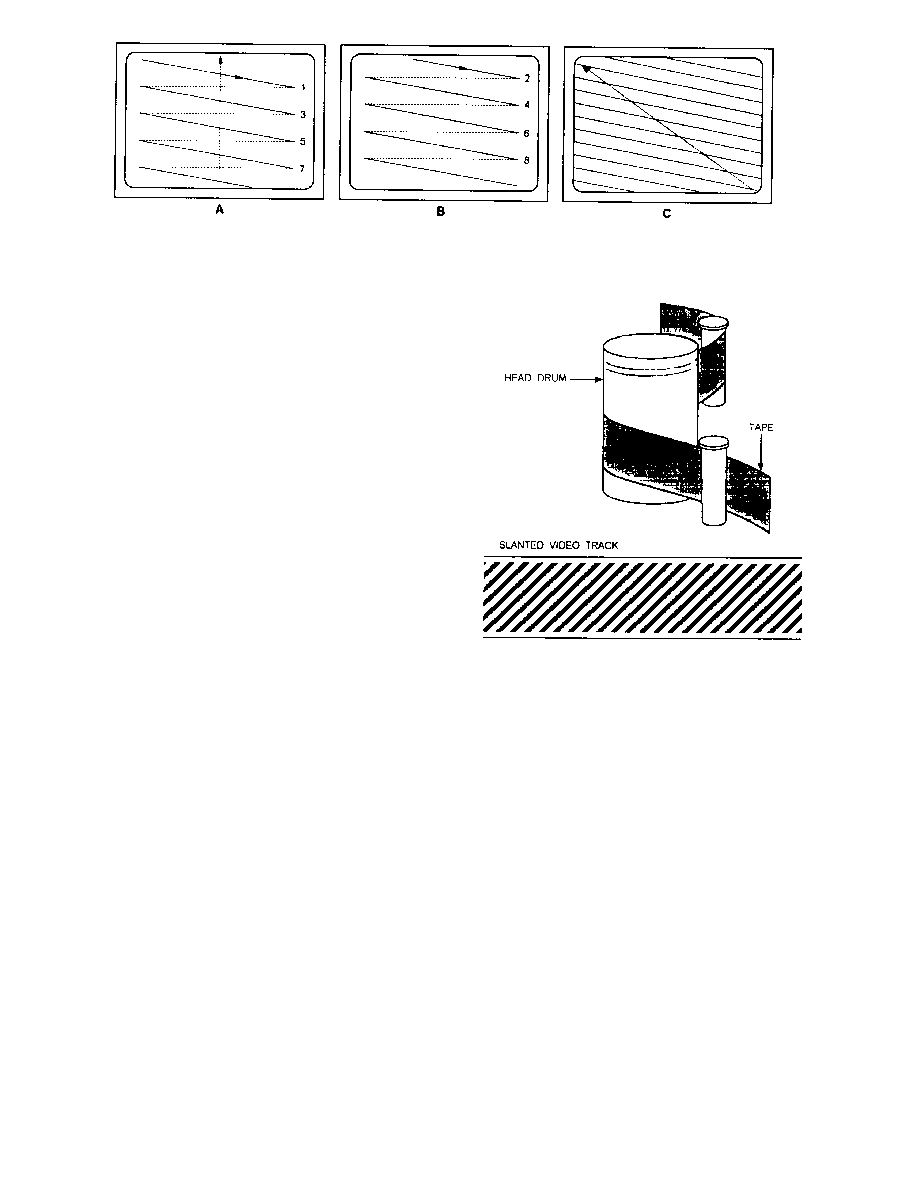
DOFMaster
for Windows
On-line
Depth of Field
Calculator
DOFMaster for Mobile Devices
On-line
Depth of Field
Table
Hyperfocal
Distance Chart
Articles
FAQ
Recommended
Books
Support
Contact
Links
Home
for Windows
On-line
Depth of Field
Calculator
DOFMaster for Mobile Devices
On-line
Depth of Field
Table
Hyperfocal
Distance Chart
Articles
FAQ
Recommended
Books
Support
Contact
Links
Home
As an Amazon Associate I earn from qualifying purchases.
![]()
place. The electron beam first scans all odd-numbered
lines, from left to right (a). When all odd-numbered lines
have been scanned, it makes up a field. One field
consists of 262.5 lines. After the odd-numbered ones are
scanned, the beam jumps back to the top of the screen.
scanning the even-numbered lines (b). When all
even-numbered lines are scanned a second field is
formed. The two fields make up a frame (c) or one
complete television picture. A frame consists of
525 lines. After completing a frame, the beam returns to
the top to start with another first field.
reflections into electrical impulses, and the microphone
principle; however, a color video camera has three
tubes. Through the use of a beam splitting device and
filters, one tube forms a red image, a second tube forms
a green image, and the third tube forms a blue image.
The three tubes have identical scanning patterns, so the
picture signals they produce are identical, except they
differ in color.
on the videotape. During playback, the rotating head
"reads" the magnetically stored information off the tape
Some VTRs use two or four heads for their record/play
(write/read) functions. Digital VTRs have even more
two record/play heads is discussed in this chapter.
spins inside a stationary head drum. When the bar spins
inside a stationary head drum, the heads contact the tape
through a slot in the head drum. The tape is wound
around the head drum in a slanted, spiral-like manner.
This permits more tape area to contact the head,
allowing the transfer of large amounts of video
information (fig. 13-5). If the head contacted only the
width of the tape, extreme tape or drum speed would be
necessary. Because the Greek word for spiral is helix,
this tape wrap, and often the whole video-recording
system, is called the helical scan, or slant track
Basic Photography Course

As an Amazon Associate I earn from qualifying purchases.
WWW.DOFMASTER.COM
© 2006 Don Fleming. All rights reserved.
© 2006 Don Fleming. All rights reserved.